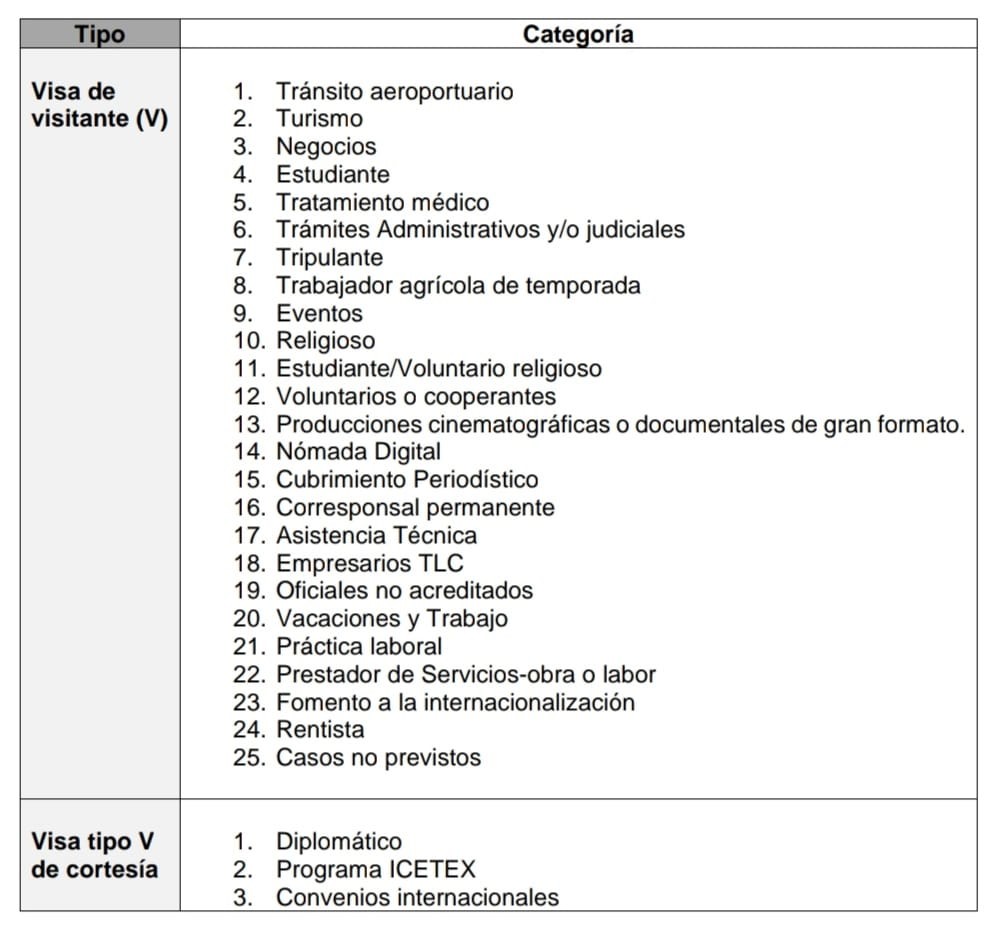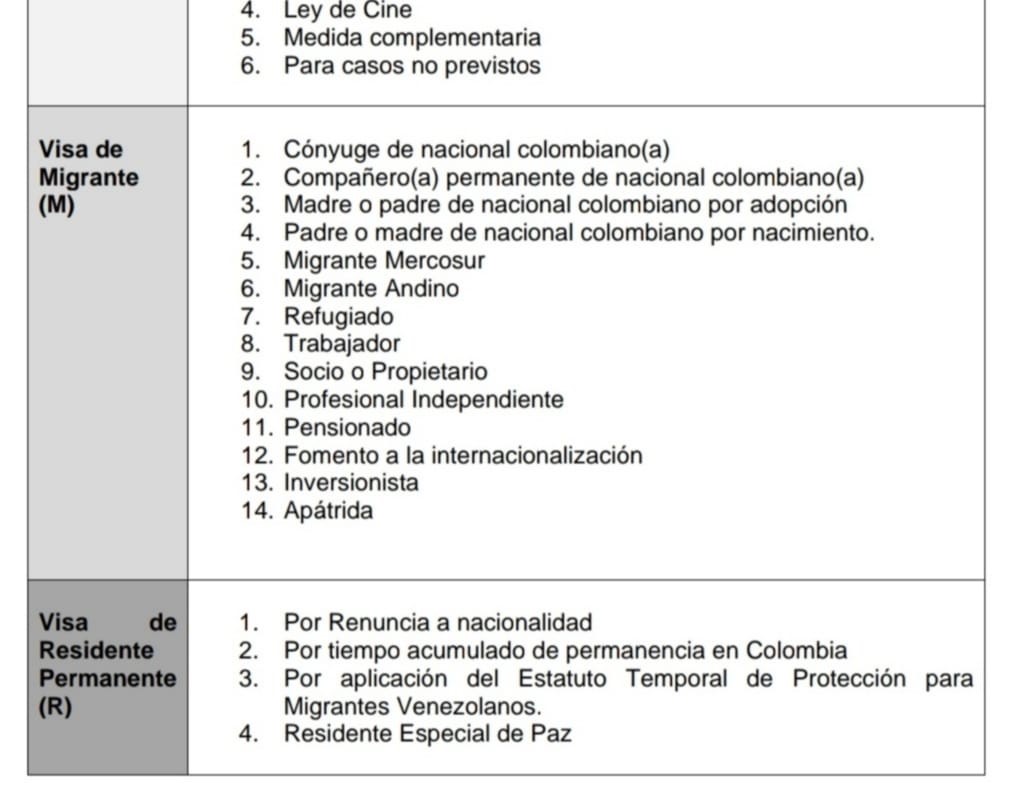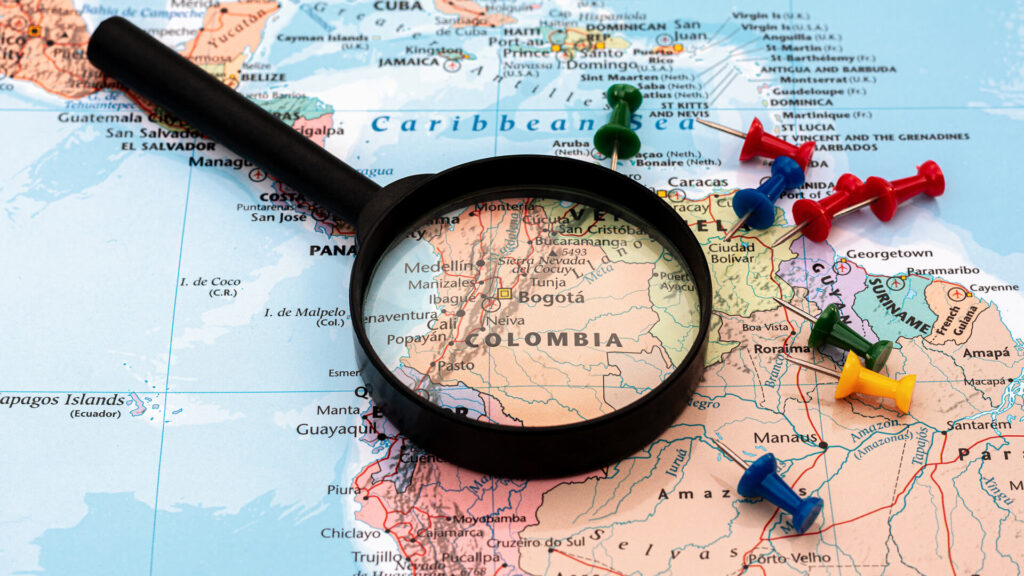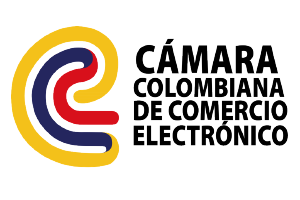Currently, we can find a draft immigration reform in Colombia on the page of the Colombian Ministry of Foreign Affairs “Whereby provisions on visas are issued and Resolution 1980 of March 19, 2014 and Resolution 6045 of August 2, 2017 are repealed”.
What changes does this immigration reform bill include in Colombia?
One of the first changes is that the mere filing of a visa application does not grant regularity in the national territory and the duration of the study does not add time in the case of Resident visa applications for accumulated time.
Additionally, foreign citizens will require authorization to enter and remain in Colombian territory, such authorization is expressed through an entry permit or a visa.
If the foreigner is outside Colombia, he/she must submit his/her application through the digital platform, before the Consular Office whose jurisdiction corresponds to his/her own country of residence or that third country where he/she is established with a temporary or permanent residence permit.
Applicants who are in Colombia must submit their application through the digital platform to the visa office in Bogota, which will only hear visa applications from foreigners who are in the country with regular immigration status, the documents required for this process must be digitized and uploaded to the digital platforms provided by the government for these.
Are visa types affected by this immigration reform bill in Colombia?
Visa categories will also be affected.
Visitor Visas
Visitor visas (type V) would have a total of 25 categories, currently there are only 16.
Among these categories for the visitor visa we would find Digital Nomads, Entrepreneurs and Remote Workers, but in order to qualify for this type of visa, they will have to provide evidence of a contract with a foreign company for which they provide their services.
In addition, you must prove that you have a minimum income equivalent to three (3) Minimum Legal Monthly Wages in Force (SMLMV), this is one of the main innovations of the law, since, in 2020, the number of nomads grew from 7.3 million to 10.9 million in the United States.
In 2021, this figure rose to 15.5 million, i.e., it increased by almost 30% in just one year, being a growing population that can contribute capital and knowledge to the nation. #1
Migrant Visas
Migrant visas (type M) would increase from 11 categories to 14.
Among the most central changes we found would be:
The displacement of the investor visa for direct investment, which will no longer be able to apply directly for a Resident visa despite making an investment of more than 650 SMLMV, but will enter into the category of Migrant visas.
The incorporation of visas of the Andean Statute For nationals of any of the States parties to the “Andean Migratory Statute”.
Distinction between spouse and permanent partner visas.
Promotion of internationalization, for foreigners with a master’s degree, doctorate or postdoctoral training in basic or applied sciences, engineering, etc., whose profiles are in line with the priorities required by the country.
Resident Visas
In the case of Permanent Resident visas, this would be reduced from 7 categories to 4. In order to be eligible for permanent residency, a minimum time in the national territory holding a type M visa is required, this time would oscillate between 2 and 5 years.
In these articles, modifications are observed in the Permanent Companion visa, which now falls under the M type visas and not under the R type.
Likewise, the R category for parents of Colombian nationals is excluded, and the R visa for Venezuelan nationals under the Temporary Protection Statute is also incorporated and regulated.




Another relevant aspect that we must point out is that foreigners of those nationalities not exempted from short stay visa determined by resolution, who have entered with a type V visa, will not be able to request the change of visa type to Migrant or Permanent Resident (R) within the national territory; they will have to carry out this procedure from outside the national territory.
In conclusion
It is important to remember that this is merely a draft of immigration reform in Colombia, the final version will be subject to modifications, but it appears that the essence of the draft resolution will be maintained.
This is because the previous draft resolution “Whereby provisions are issued regarding visas, Resolution 6045 of August 2, 2017 and Resolution 1980 of March 19, 2014 are repealed” which was socialized on February 8, 2019, resulted quite similar, maintaining this restrictive line that hinders entry to Colombia.
Both in the 2019 project and in the new text of the immigration reform project, they prefer to opt for a more severe legislation, the only exception would be the inclusion of the visa for digital nomads, but in general terms it makes it more difficult for foreigners to enter, thus causing a greater bureaucratization in the visa processes in Colombia.
You can review the complete immigration reform project in Colombia at the following link if you wish to learn more.



